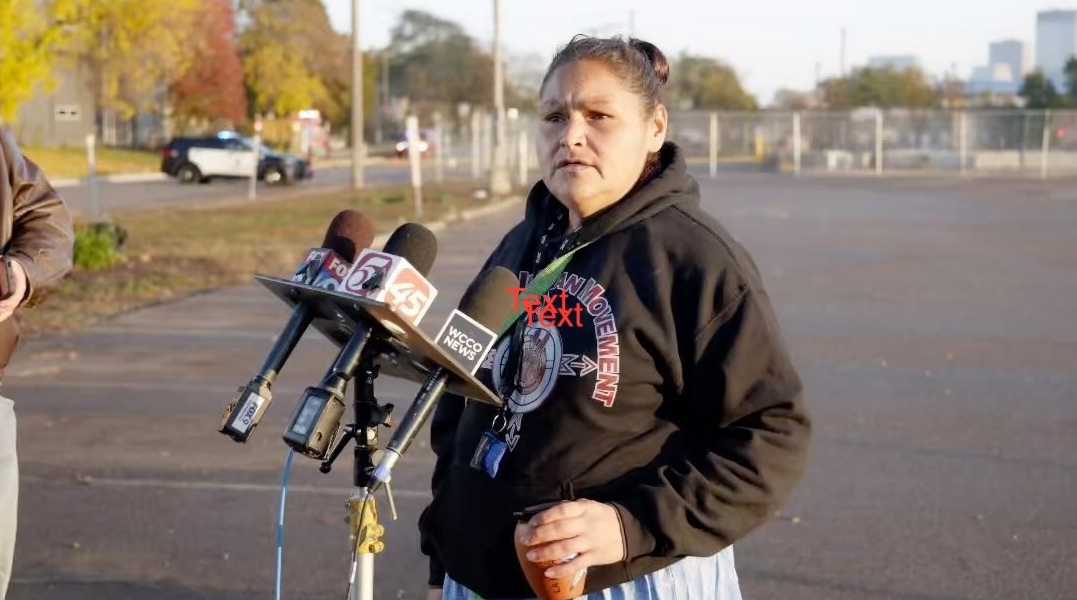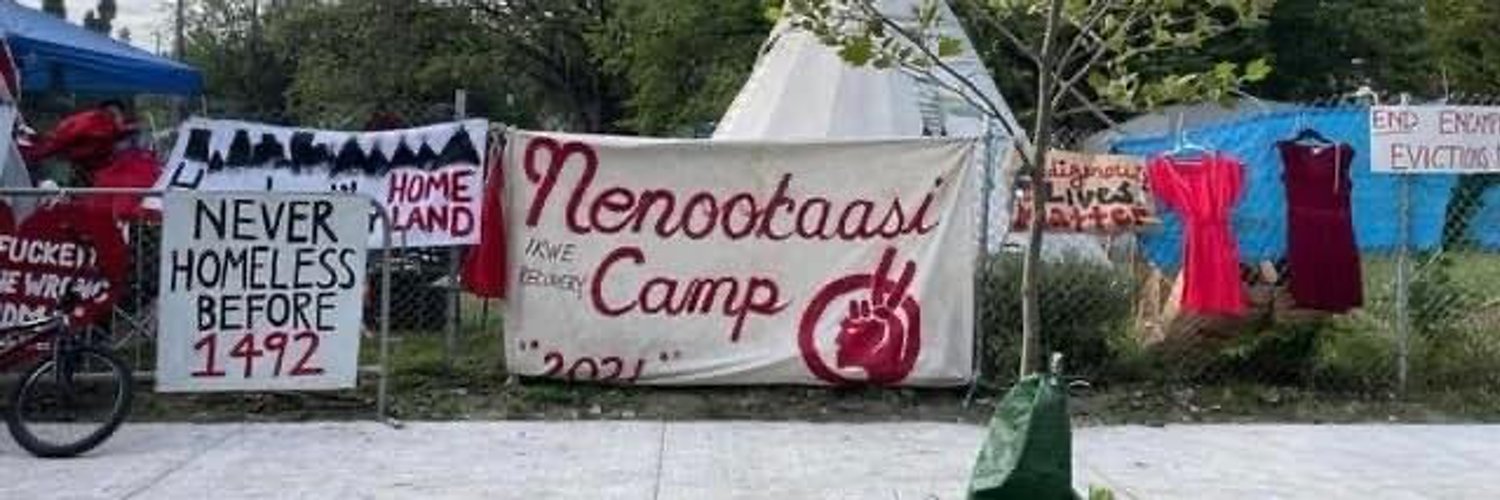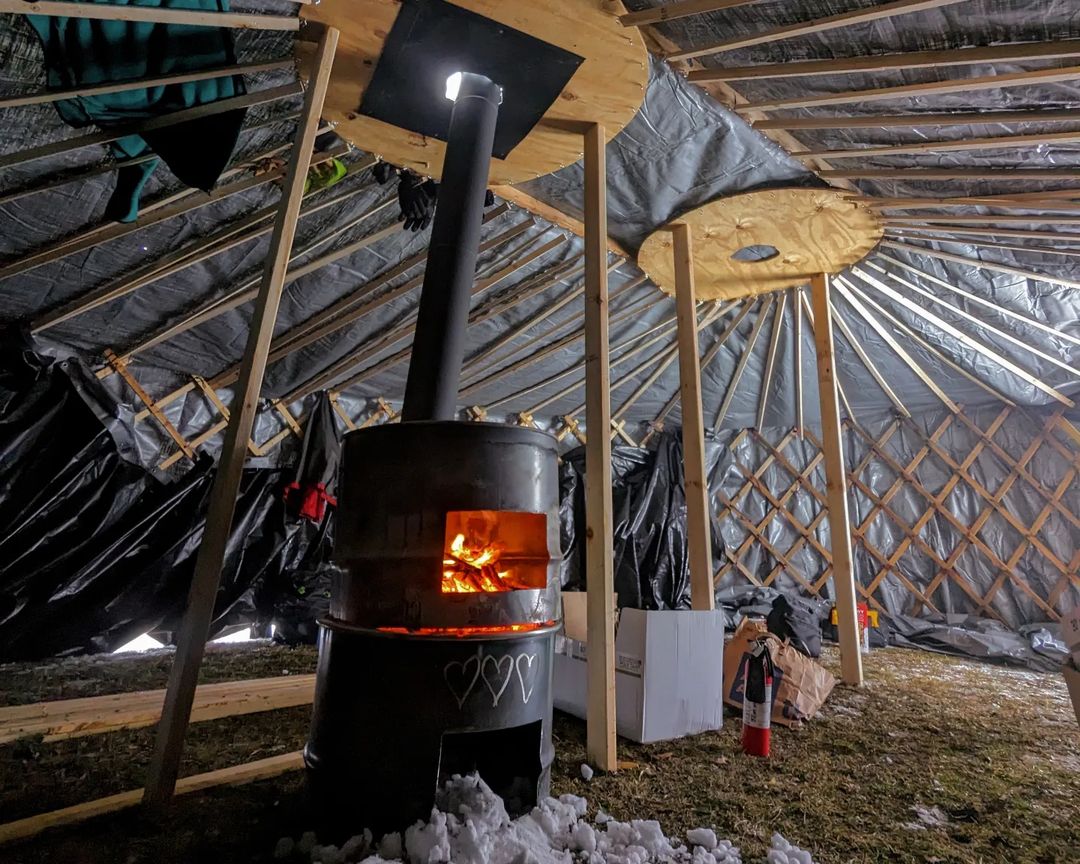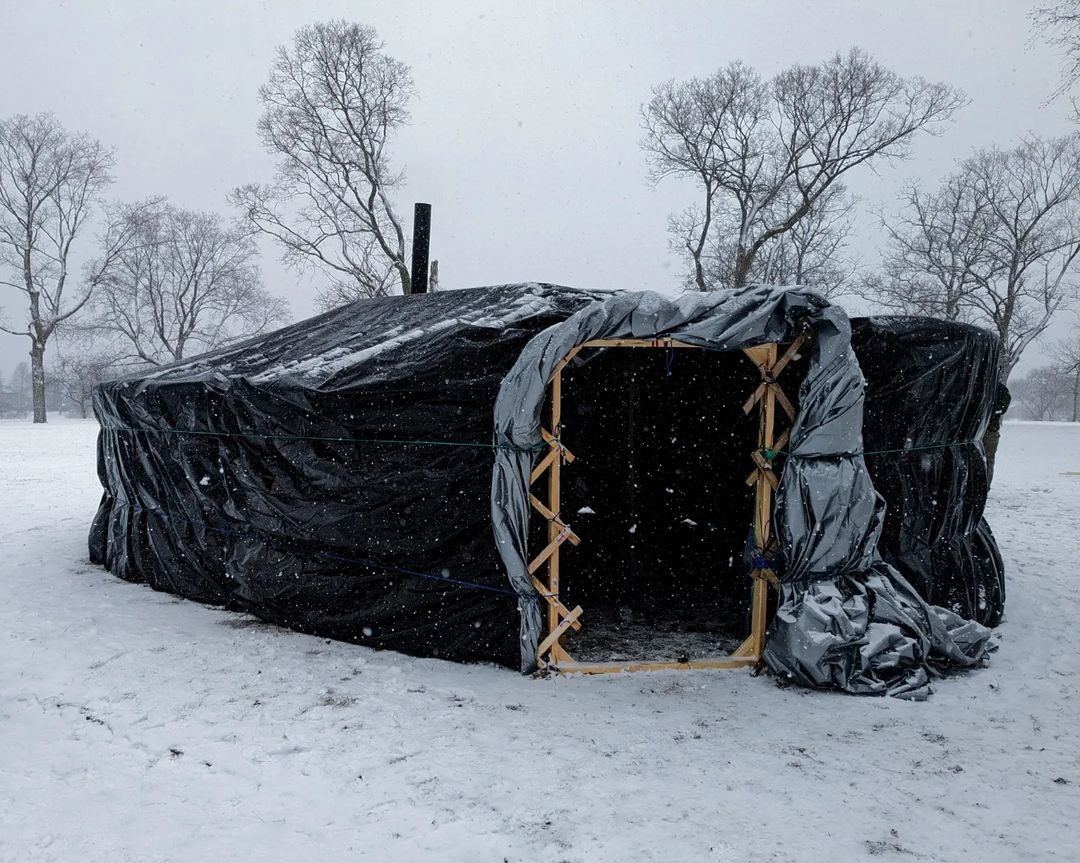
Before Christopher Rabideau, a member of the White Earth tribe, arrived at Camp Nenookaasi last fall, he was living in a camping tent. It wasn’t ideal for the below-freezing temperatures of an upcoming Minneapolis winter, nor did it offer much privacy for him and his girlfriend. So when his friends invited them to join Nenookaasi, an Indigenous homeless encampment, they were relieved to move into a yurt of their own.
“There’s a lot more privacy in a yurt,” he said. “We get about 5 to 10 feet of more space [than a tent] to put our belongings and make our own little bed.”
Rabideau’s yurt is one of more than 60 built by the Autonomous Yurt Union, a mutual aid collective in Minneapolis and St. Paul. Its mission: to build warm, safe shelters that are quickly collapsible and transportable in the face of growing eviction sweeps in the Twin Cities.
Over the past few years, Minneapolis Mayor Jacob Frey has called for sweeps of the city’s homeless encampments, saying they’re a “hazard” and ordering city crews to fill eviction sites with broken concrete to prevent future camps from forming. When authorities crack down on homeless encampments, members say they’re not only forced to move, they can also lose their possessions and be exposed to harsh temperatures on the streets.

The Autonomous Yurt Union is offering support during a time of few alternatives to the city’s shelter system, which Indigenous communities say is unsafe, and of rising homelessness among the state’s Indigenous people, according to the Minnesota Interagency Council on Homelessness. While Native Americans make up only 1% of Minnesota’s population, they represent 12% of those who are homeless.
The yurts, which have a wood-burning stove, offer not only a warm home, but a sense of community to a population also facing increased opioid abuse since the pandemic.
“The yurts are a very nice community space to have,” said Nicole Mason, an organizer at Camp Nenookaasi. “They bring people together.”
Offering stability to a homeless Indigenous community
Camp Nenookaasi is based in the historic Native corridor of Minneapolis, which houses one of the nation’s largest urban concentrations of Indigenous people and was established as a cultural district in 2020 to prevent displacement and gentrification. An earlier iteration of the camp, called the Wall of Forgotten Natives, first popped up in Minneapolis’ East Phillips neighborhood in 2018 on a piece of land bordering the highway and residential streets. A few weeks later, the city shut it down. Since then, encampments have appeared in the corridor and been evicted numerous times, until occupants founded the latest iteration, Camp Nenookaasi, near the neighborhood community center in August.
Mason said many of the camp’s residents, 95% of whom are Indigenous, gathered together after living individually because it feels safer to stay in a community where everyone knows one another. “A lot of people here have a lot of inherited trauma,” she said.
Mason said the camp had around 236 residents at its peak in August but has dropped to 60 residents after multiple evictions. When the city evicts residents, some shuffle between the streets and shelters without any way for organizers to track how they’re doing, Mason said.

The Autonomous Yurt Union entered the picture as temperatures began to drop last fall, when Nenookaasi organizers reached out to mutual aid organizations for possible warmer structures. Robin Darich, a member of Yurt Union who had been involved with mutual aid efforts for unhoused people in Minneapolis, first heard about the practicality of Mongolian yurts from fellow organizers at the 2016-17 protesters at Standing Rock reservation in North Dakota. “They’re meant to be put up and taken down quite frequently and moved around, but we wanted to make them even more mobile,” they said.
Darich spent a month researching Mongolian YouTube creators who documented the yurt creation process: from cutting trees, to splitting wood to make lattices, to shearing sheep for felt covers. Organizers bought supplies from Home Depot and played with adaptations like hooks and pegs to simplify assembly and disassembly. “A lot of minds went into this current version of our yurt,” Darich said. “The more people who give their input, the better our design gets.” Currently, members are experimenting with a double yurt design.
Another crucial adaptation is the inclusion of a wood-burning stove in the middle of the yurt. Unlike a tent, yurts have enough space for a barrel — a much safer option than burning highly flammable propane tanks. “The furnace that burns our wood gets it so hot inside, and it’s perfect for [the yurt’s] size,” Rabideau said. “I don’t know how they figured out the design, but it’s amazing.”

When Darich approached camp organizers with a few yurts last August, demand quickly outpaced production. Over the next two months, builders fundraised $20,000 on GoFundMe to build 20 yurts before a cold snap hit the city. The Yurt Union organizes community “build days” about once a month at neighboring Powderhorn Park, where community members are invited to learn how to build yurts. The union also routinely delivers firewood and performs yurt maintenance. When evictions happen, the Autonomous Yurt Union will post on social media to recruit volunteers to help pack up community members’ belongings and move them to a new encampment. Rabideau said volunteers will cross police lines to assist with taking down and transporting yurts.
After his last yurt burned down during an encampment fire in February, volunteers were able to build him a new yurt within four to five days. “They’ve gotten it down to building a yurt in an hour and a half,” Rabideau said. “We’ve also had to rebuild a few times with recycled parts from other camps.”
Building community in uncertainty
While yurts are a welcome alternative to tents, they are not eviction-proof. In January and February alone, police swept Camp Nenookaasi three times. During each eviction, Rabideau either packed up his yurt or witnessed his possessions being destroyed by a mini bulldozer if he didn’t get out in the 90 minutes authorities gave him.
According to Minneapolis’ operational guidelines on encampment response, the city will post a notice at a site at least 72 hours before closure. “The day of the closure, individuals at the encampment are allowed to move their belongings before cleanup activities commence,” said Greta Bergstrom, communications director for the city of Minneapolis. “If an unsheltered resident discovers certain important items are not in their possession, they are permitted to re-enter the site to locate them.”
St. Paul’s Department of Safety and Inspections communications manager Casey Rodriguez said the city also provides advance notice to residents and does not “bulldoze” encampments, but that “routine cleaning days are scheduled” and ”only abandoned property or unsafe shelters are removed.”
But Darich said what the city considers “unoccupied” isn’t necessarily unlived-in. “The city takes temporarily vacant yurts, even when people have stepped out for just a few hours,” they said.

Kumi Smith, an assistant professor of epidemiology and public health at the University of Minnesota, has interviewed dozens of members of Camp Nenookaasi for her research on the impacts sweeps have on homeless populations. When she asked them what it felt like to be swept, most inhabitants talked about the loss of irreplaceable possessions and what it was like to re-collect all of their personal belongings and build a new supply of clothes and toiletries. In addition, they described the harm sweeps cause in their relationships and communities.
Smith said yurts are not just about the housing structure, but about fostering community as well. “They’re larger and the space can be heated relatively safely,” she said. “They’re sturdier, so they’re more permanent than a tent. It seems to embody all the things that community residents told us they really value.”
Every morning, residents gather at Mason’s yurt to sit around and share stories. They eat, drink coffee and get traditional medicines. “My yurt is like a tepee,” Mason said. “Most of our residents are addicted to fentanyl, so they need my yurt to provide that healthy, safe and sober space within the camp.”
For many residents, yurts offer a semblance of permanence as they live in a state of instability. Mason described how residents furnish their yurts with couches, lighting and carpets that they find on the street or through donations. “For the first time in a long time, it’s an opportunity to decorate a home in the way they wish,” Mason said “They get to make it feel like home.”



